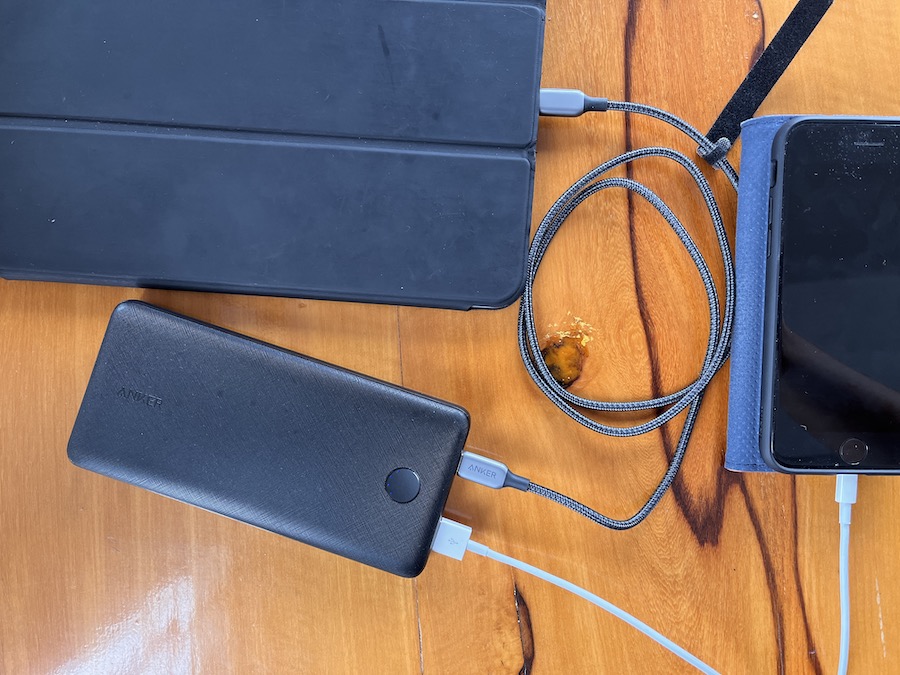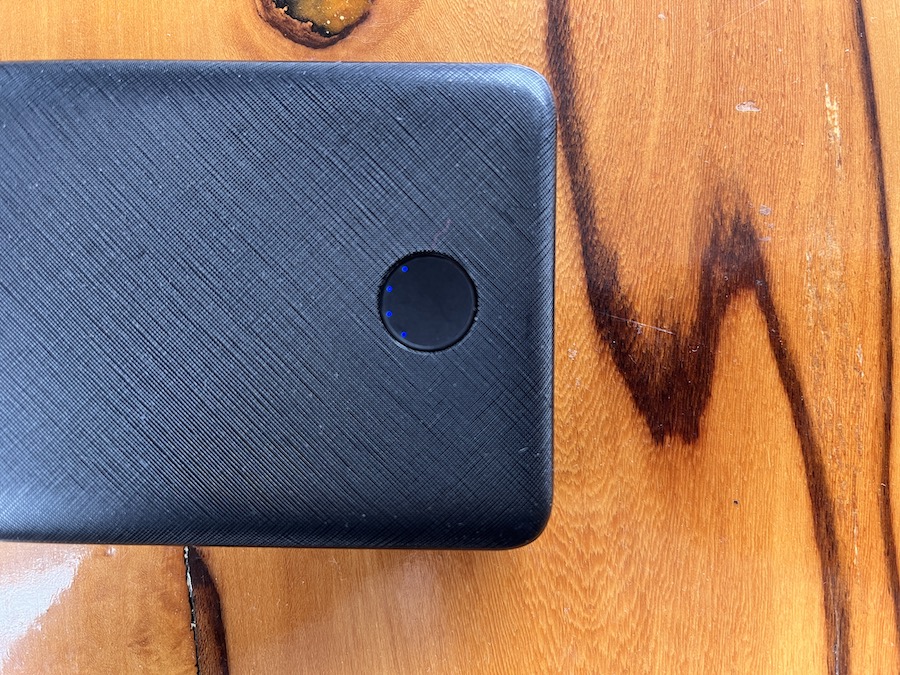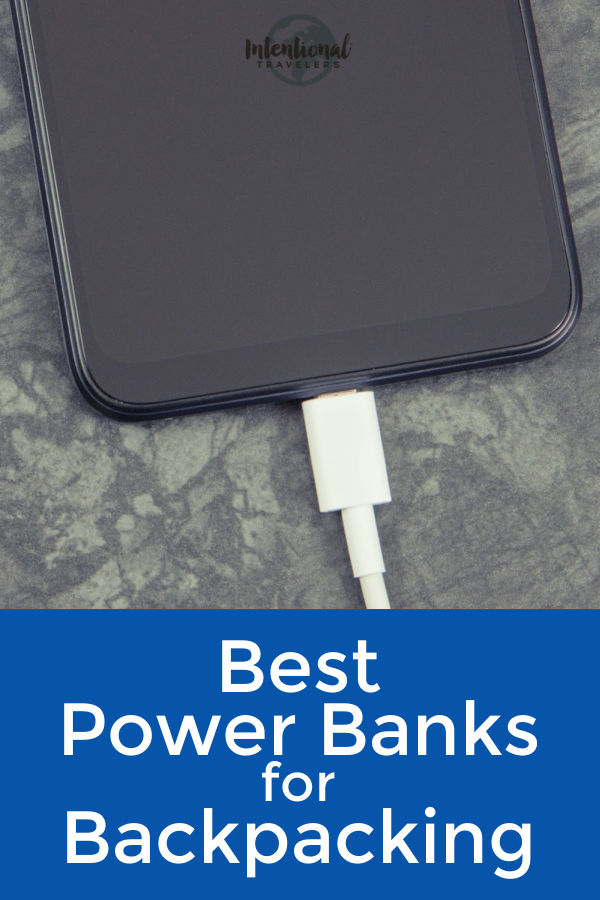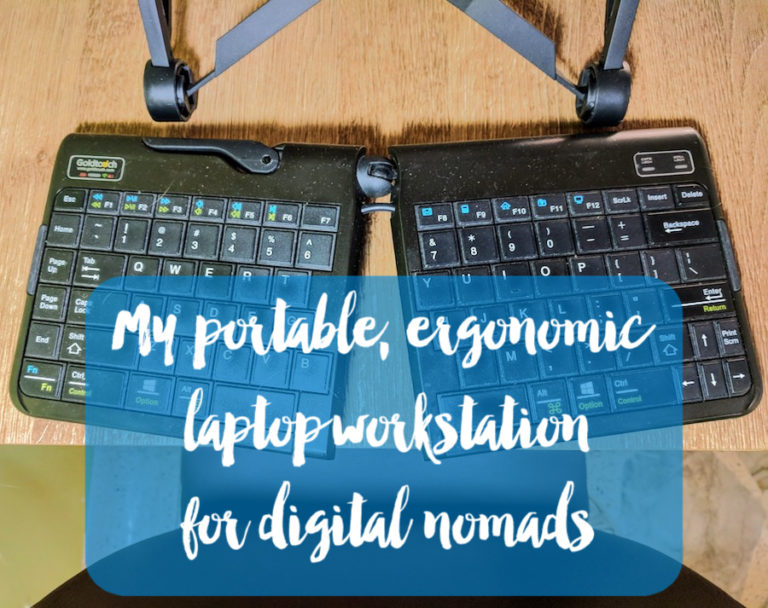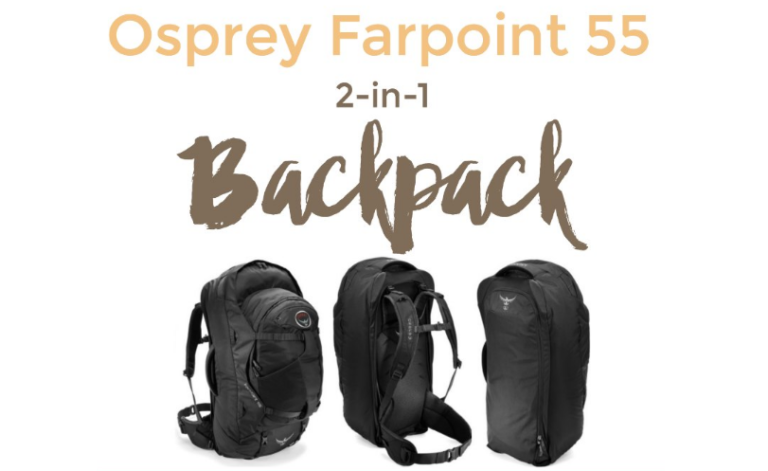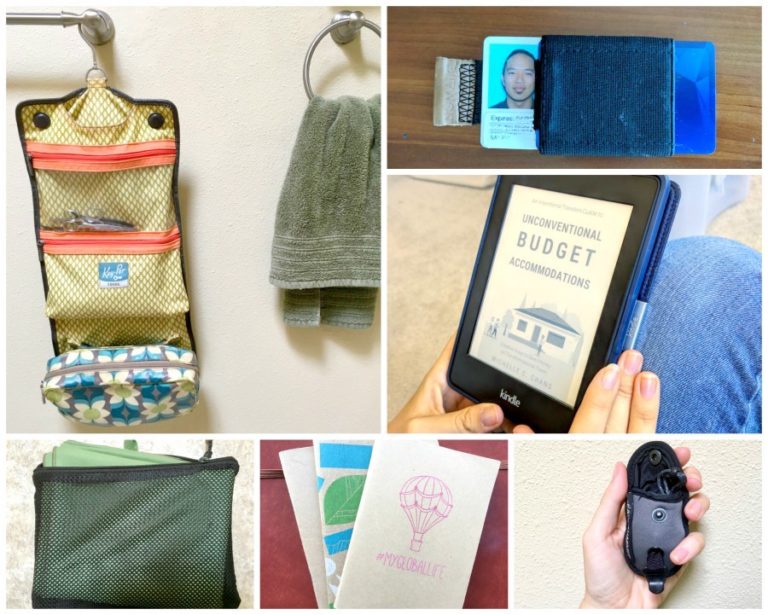The Best Power Bank for Backpacking: Travel Battery Chargers
These days, the success and enjoyment of our trips often depends on the battery life of our smartphone (and other devices).
Maybe you’re a traveler that always wants their devices fully charged. Maybe you’re wondering why you’re always looking for an outlet or waiting for your device to charge before you can continue with your life.
Even when backpacking and off-the-grid with no cellular or wifi connection, we still depend on our smartphones for offline maps and documenting our adventures through images and videos along the journey.
It makes sense to carry extra juice to give your devices a full charge as needed. But what is the best power bank that you should purchase? Are they all the same?
We’ve done the travel power bank research and will tell you which power banks are best for backpacking or other types of travel — and which one we personally use for our adventures.
Quick Recommendations: Our Top Power Bank Choices for Travelers and Backpackers
For most travelers, our top picks tick the boxes you’ll need. These power banks are compact, have solid capacity, enough ports to cover a variety of devices, and are available at good prices.
The only cons? These are not the most tech-packed and should not be relied upon to recharge large capacity devices like laptops. (If you need to charge laptops, you should look into power stations and not portable power banks.)
Table of Contents
Benefits of a Power Bank for Backpacking and Travel
![]() For most trips — whether it’s a couple of days of backpacking, going on a day hike, or spending a couple of hours exploring a new destination — it’s nice to know that you can carry something that weighs about a pound to recharge your important devices.
For most trips — whether it’s a couple of days of backpacking, going on a day hike, or spending a couple of hours exploring a new destination — it’s nice to know that you can carry something that weighs about a pound to recharge your important devices.
Recharging could make a big difference in how long you’re able to stay out. In some cases, having a working phone can also literally be life saving.
With continued advancements in technology, power banks are getting smaller, charging faster, and holding more battery capacity.
The other thing to note is that power banks are relatively inexpensive, especially if you just need to recharge your phone a couple of times.
Typically you’ll find that expensive power banks have larger storage capacity but are so large that they aren’t really practical to travel with. They might be great for emergency situations like a hurricane or tornado in which you need days worth of power. Or maybe you’re a content creator and you need extra power for long shoots.
This is why it’s important to think about what your own personal needs are when choosing the best portable chargers.
Fortunately, there’s a good chance that there is a power bank that will match your type of travel, charging needs, and budget.
How To Choose A Backpacking Power Bank
Don’t get overwhelmed by all the options out there. As with most travel gear, there are a lot of great options. The most important thing is to think about your own travel preferences.
Power banks are tools and the best tools are the ones that meet your particular needs.
What are the best options? Below are some things to consider when choosing a power bank.
What is the main device you need to recharge?
This question will determine the capacity you need and the type of ports.
Currently I’m using an iPhone 13 and it’s the ONLY device (at the moment) I worry about possibly losing charge. I want to be sure that whatever power bank I use, it can charge my phone at least three times.
I also know that my phone charges quickly with a usb-c cable (to lightning) so I make sure that whatever power bank I purchase has a usb-c port.
What kind of travel will you be doing?
If you’re backpacking for several days and know you won’t be able to recharge your power bank via an outlet, look for a power bank with a solar recharging option. These are great for off-the-grid use.
The cons for solar charged powerbanks is that you don’t usually get the same kind of tech specs as power banks that recharge only by outlets. If you’re doing mostly day trips or short overnight trips, a non-solar option might be a better fit.
For most of our personal trips, our portable battery pack is recharged via an outlet and is more than enough for our needs. We can go 2-4 days without needing to recharge our power bank and can recharge our smart phones a couple of times.
What power bank capacity do you need?
The truth is that anything electrical can get very technical and complex. As we are not experts in this area, we won’t try and explain the details we ourselves don’t understand. Instead we’ll share some real-use scenarios to help you determine what capacity you might need.
In general, most of the power banks you can find in stores will come with a milliampere (mah) rating. The larger the mah number means a larger capacity, which means the more times you can charge a device.
Since each device you charge has it’s own mah battery size/capacity, the amount of times you can charge a device will differ.
Our current Anker 535 power bank, when it’s charged to max capacity, can recharge my iPhone 13 about 4 times but can only recharge my iPad 2 times (or less). This is assuming both devices start at about 20% or less battery charge.
What’s the largest power bank I can bring on a plane?
This might be the most important question when considering the capacity vs. how many times it can recharge a device.
According to the FAA, power banks are only allowed in carry-on baggage up to 100 watt hours (Wh). This is the equivalent to less than 27,000 mah.
For most travel and backpacking scenarios, we recommend power bank battery capacities between 20,000 mah and less than 27,000 mah.
For a more technical guide regarding capacity, check out this really great and super detailed article about power bank capacity.
What output ports do I need?
First, it’s important to know what type of usb ports and cables are required for the device that you want to charge. Make sure you have the right cable to match both the power bank port and your device’s port.
As mentioned before, our iPhones currently use a lighting cable/port. To use a power bank to charge these phones, we either need a usb-a or usb-c to lightning to connect the two.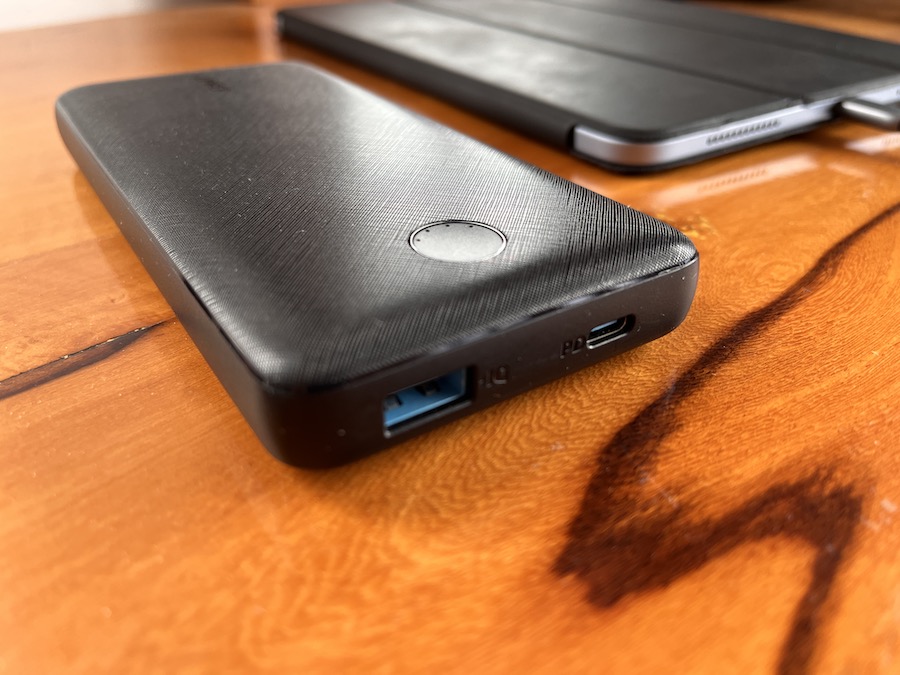
Not all cables are the same. Charging from usb-a vs. usb-c is different than a straight usb-c connection which is more powerful and faster.
What charging speed do I need?
It should also be noted that power banks differ from each other not only in the charge capacity they can hold, but also in the speed they can charge certain devices.
Nowadays, newer smartphones, tablets, and even some laptops have the capability for fast charging. This requires the right combination of a specific cable, the right charging device (like a power bank or power brick), and device.
Some people really care about speed, but I don’t think this is a make or break quality when deciding on a power bank.
What weight and size power bank do I want to travel with?
The answer to this question will again depend on your travel needs and preferences.
For backpackers, every ounce can be crucial for the overall experience. Whereas food and water are consumable weight, power bank weight stays the same regardless if it’s fully charged or not.
Thankfully most power banks weigh about a pound or less, which is why this shouldn’t be too big of a consideration when choosing your power bank.
The most important consideration when purchasing a power bank
It doesn’t matter what power bank you use if your device’s battery health is already poor.
True story, I got to a point that my Google Pixel phone could not hold a charge at all after 4 years of use. It would deplete so quickly.
For example, I could charge it fully and within 30 minutes, without even using it, I would lose 20-30% of the battery. That’s bad.
When I replaced my 4 year old Google Pixel with a brand new iPhone 13, I was amazed that even after 9 hours of heavy use, I would still have over half a battery left.
If your device cannot hold a charge to a point very well, you should really consider upgrading your device (or replacing your battery) before getting a power bank.
Further reading on device battery health management: from Apple and from Google.
Our Top Overall Choices for Power Banks
Anker 525 Power Bank (PowerCore 20K)
We like Anker a lot. It’s a brand that has been extremely reliable for us.
We love our Anker power bank and also use this brand for cables and power bricks.
Anker 525 has usb-a and usb-c ports and quick charge capability with compatible devices. It can also be recharged faster with a compatible power brick.
What we like is that its 20,000 mah battery has enough capacity to recharge our phones several times and enough power to recharge an iPad a couple of times.
Best for most travelers and most needs.
Pros:
- Good feature set and portability
- Affordable
- Fast device charging
- Fast re-charging of the power bank
Cons:
- No LED/battery display to tell capacity
- Cannot recharge larger devices such as laptops
Check out the Anker power bank or Get it on Amazon >
BLAVOR Solar Power Bank
For backpackers and outdoor adventurers, you’ll want a solar recharging component as you never know how long you’ll be away from an outlet.
Solar recharging gives you a chance to replenish your power bank’s capacity off grid. This of course is no perfect solution.
Solar charging success is dependent on the weather and hours of the day where there is actual sunlight. For regular travelers, these options may not be ideal because of size and extra features like built-in flashlights that are unnecessary.
It should be noted, though, that the solar recharging capability will never be as efficient or as powerful as using a wall outlet. The solar recharging should be seen as emergency use only.
Best for backpackers and backcountry adventures.
Pros:
- Can be recharged by solar energy
- More rugged than typical power banks
- This model offers wireless charging with compatible smartphones
- Affordable
Cons:
- No LED/battery display to tell capacity
- Not as small as most portable power banks
Check out the BLAVOR solar power bank on Amazon >
Best Portable Power Banks For Backpacking and Travel
Anker PowerCore Fusion 10000
We really like the clever design of this small power bank because of its built-in charger.
It’s a 2 in 1 device. You can use this as a regular wall outlet and then take it with you to charge your usb based devices. Yes, it has its own power source.
The only drawback to its smaller form factor is that it holds less capacity. But if you want the best, most lightweight power bank with great features, this is it.
Best for daily travelers and remote workers.
Pros:
- Two devices in one design (wall outlet and portable charger)
- Small in size
- Decent capacity for size
- Usb-c and usb-a ports
Cons:
- No LED/battery display to tell capacity
- As expensive as larger capacity power banks
- Not enough capacity to charge multiple devices
Check out the Anker PowerCore on Amazon >
Best Budget Power Bank
This is kind of a tough category as you can find a lot of good options for $60 USD and under.
Charmast Portable Charger USB-C Battery Pack
For the price and feature set, it’s hard to beat the usb-c portable charger from Charmast. It has a 10,000 mah capacity and a helpful LED screen that actually tell’s you the battery’s capacity status.
It also has a pretty great feature set with plenty of ports and a couple of recharging options.
Best for solo travelers.
Pros:
- Price to feature set value is unmatched
- Usb-c and usb-a ports
- Fast device charging capability
- LED status screen
Cons:
- Not as well known as brands like Anker
- Not enough capacity to charge multiple devices
- Not as much capacity as others this size (but not at this price)
Check out the Charmast Battery Pack >
Best Power Banks for Charging Multiple Devices at the Same Time
There’s a good chance that you have multiple devices and that at some point you may need to charge them all at the same time, especially if you travel with a partner.
Some power bank devices struggle to charge multiple devices at a time. They just weren’t designed for that.
Charmast USB-C Power Bank, 26800mAh Portable Charger
This portable charger from Charmast succeeds in this area, offering up to 4 devices that can be charging at the same time. Probably a great option for families.
Don’t forget, though: more devices mean more cables are also needed at one time!
Best for couples and families with multiple devices.
Pros:
- Up to 4 devices can charge at the same time
- Large capacity
- Great price for this capacity and feature set
Cons:
- No LED status screen
- Don’t expect quick charging capabilities, especially with multiple devices
Check out the Charmast Portable Charger for Multiple Devices >
Best Large Capacity Power Bank
For those who need the ability to recharge their laptops or larger devices like drones, this might be the best portable option for you. If you need more capacity from this point, you’ll sacrifice portability and the price will continue to increase significantly.
This category really fits a small niche of travelers and users. As digital nomads, we like the appeal of being able to recharge our laptops, though we’re rarely in a situation where it’s truly needed.
Anker 747 Power Bank (PowerCore 26K for Laptop)
Anker’s largest size battery capacity (that can be taken on a plane) is also its most expensive and most feature laden. It has quick charge capability with compatible devices. It can also be quickly recharged with its supplied power brick and cable.
Best for remote work content creators or those with large budgets.
Pros:
- Can charge a laptop via usb-c
- Charges multiple devices at the same time
- Recharges itself quickly with the supplied power brick and cable
Cons:
- No LED status screen
- Really expensive
- Probably unnecessary for most users
Check out the Anker PowerBank for Laptops or Get it on Amazon >
Final Thoughts On the Best Power Bank For Backpacking
We can’t reiterate enough how important it is to check your device’s battery health before you even consider buying a new power bank. All rechargeable batteries lose their ability to hold a charge AND their full capacity diminishes over time.
It might be more important to upgrade your device OR find a way to replace your device’s battery.
Additionally, be realistic about your recharging needs. Every traveler is different and uses their devices differently.
Don’t forget that power banks and device recharging can also be affected by the kind of cable you are using.
Ultimately though, we are a living in the golden age of this specific tech tool in that there is a power bank option that fits everyone’s needs. Choose the one that best matches your needs.
You might also like these travel gear posts:
– Long Term Travel Essentials: Clothing Recommendations
– Packing Hacks of Frequent Travelers
– 12 Items We Take With Us on Every Trip
– Our Favorite Alternatives to Travel Wallets
– Digital Nomad Tech Gear Essentials
– Portable Wifi Device Review
– Osprey Farpoint 55 Travel Backpack Review
– Minimalist Travel Toiletries List for Women
– Best Light-Weight Travel Jackets for Men and Women
– My Portable Ergonomic Workstation Set Up for Digital Nomads
– Best Water Resistant Travel Shoes for Walking
Like this post? Pin it for later or share with friends!

